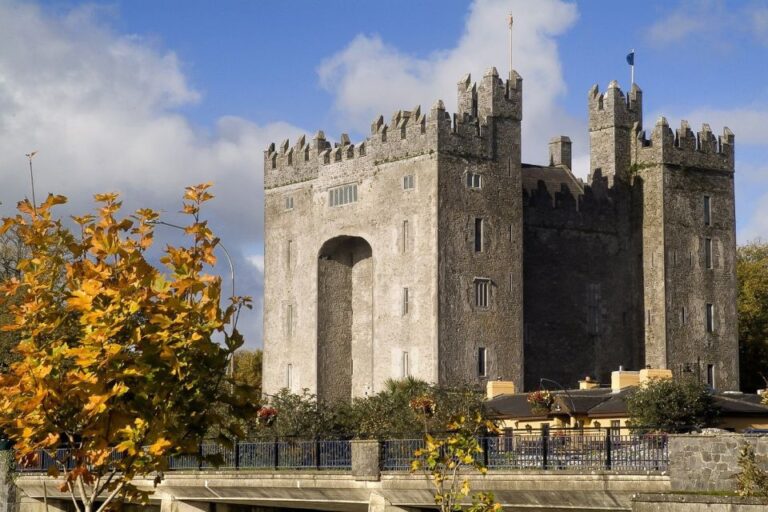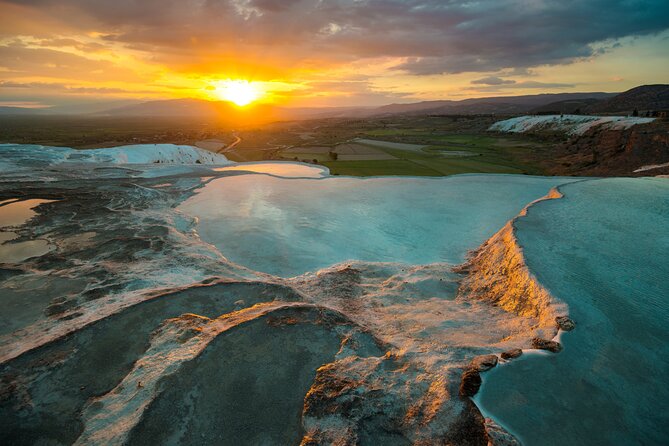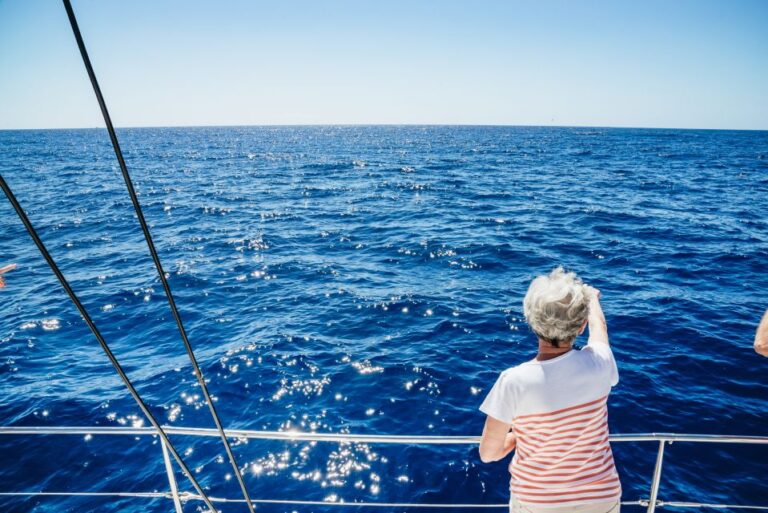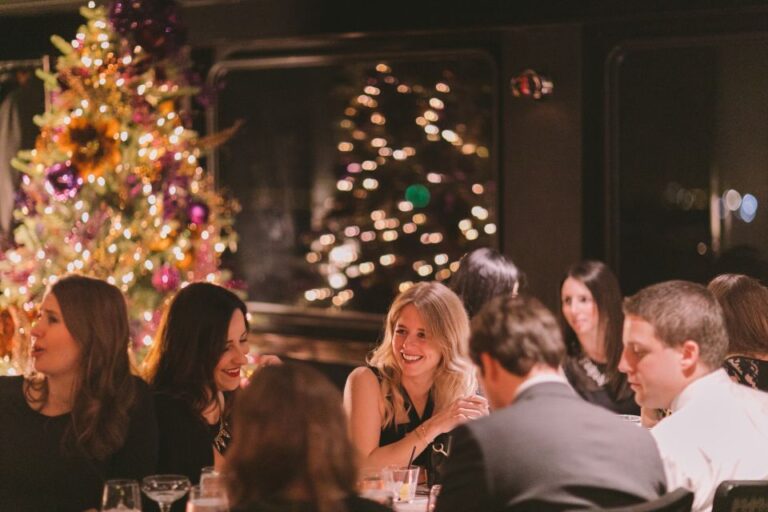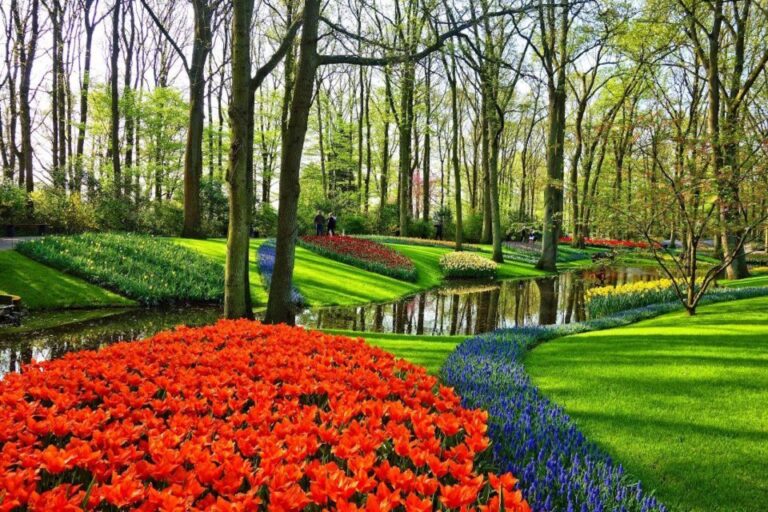Bordeaux’s landscape has evolved into a captivating fusion of old and new, seamlessly blending the city’s historic architecture with cutting-edge green spaces. From the iconic Botanical Garden to the dynamic Parc aux Angéliques, contemporary projects showcase Bordeaux’s commitment to sustainable urban design. Innovative stormwater management and adaptive reuse breathe new life into industrial structures, transforming the relationship between the city and its natural environment. As Bordeaux continues to push the boundaries of landscape architecture, one wonders what other surprises this remarkable city has in store.
Key Points
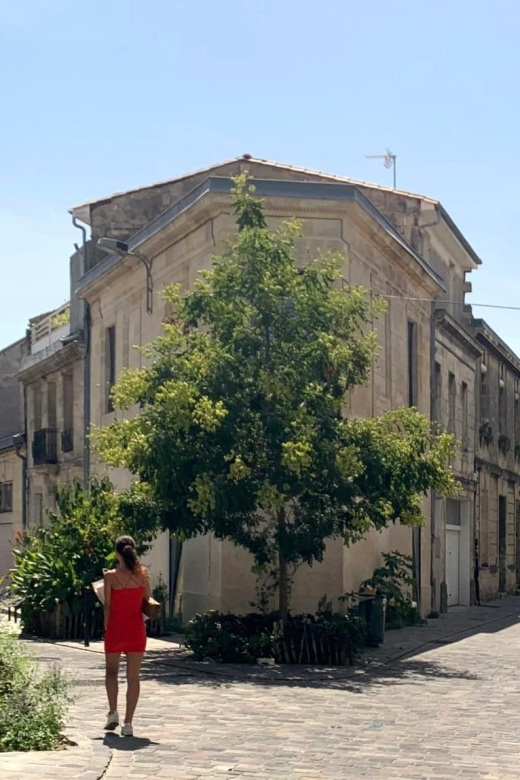
- Bordeaux’s contemporary landscape design balances preserving its historic 18th-century urban fabric with integrating innovative green spaces and sustainable practices.
- Contemporary landscape projects in Bordeaux, such as the Botanical Garden and Parc aux Angéliques, focus on co-construction, pedagogy, and flexibility to engage visitors.
- Landscape-driven development on Bordeaux’s right bank seamlessly blends modern architecture, lush green spaces, and adaptive reuse of industrial structures.
- The redevelopment of Bordeaux’s quays by Michel Corajoud transformed the city’s relationship with its waterfront, creating differentiated quality public spaces.
- Smaller-scale nature-focused projects in Bordeaux’s historic heart, like Square Vinet and Leyteire courtyard, showcase a commitment to integrating nature and sensory experiences.
Bordeaux’s Stone City Landscape
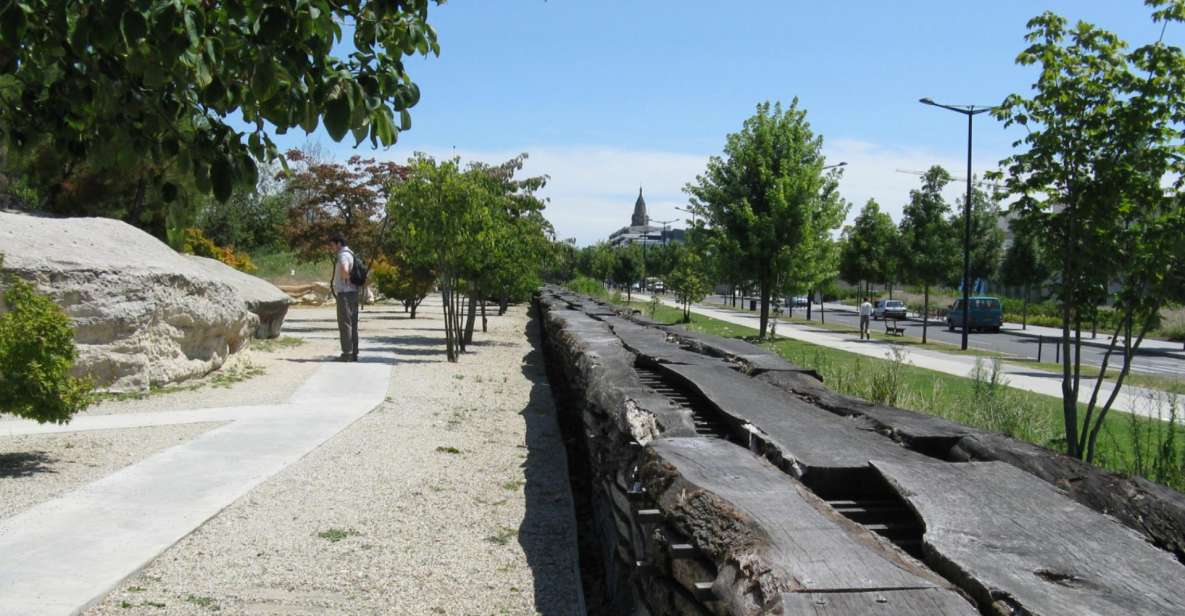
Bordeaux’s reputation as a ‘Stone City‘ stems from its wealth of exquisite 18th-century buildings and traditional workers’ residences, which collectively define the city’s architectural identity.
Yet, this impression only tells half the story – over fifty percent of Bordeaux’s territory consists of natural and agricultural landscapes.
The city’s redevelopment in the 1990s had to carefully balance the preservation of its historic urban fabric with the integration of contemporary landscaping approaches.
This delicate balance has resulted in a vibrant tapestry where the timeless beauty of Bordeaux’s stone structures is complemented by innovative green spaces that cater to the needs of modern urban life.
The city’s commitment to this duality has cemented its status as a model of sustainable urban design.
Contemporary Landscape Complementing 19th Century Parks
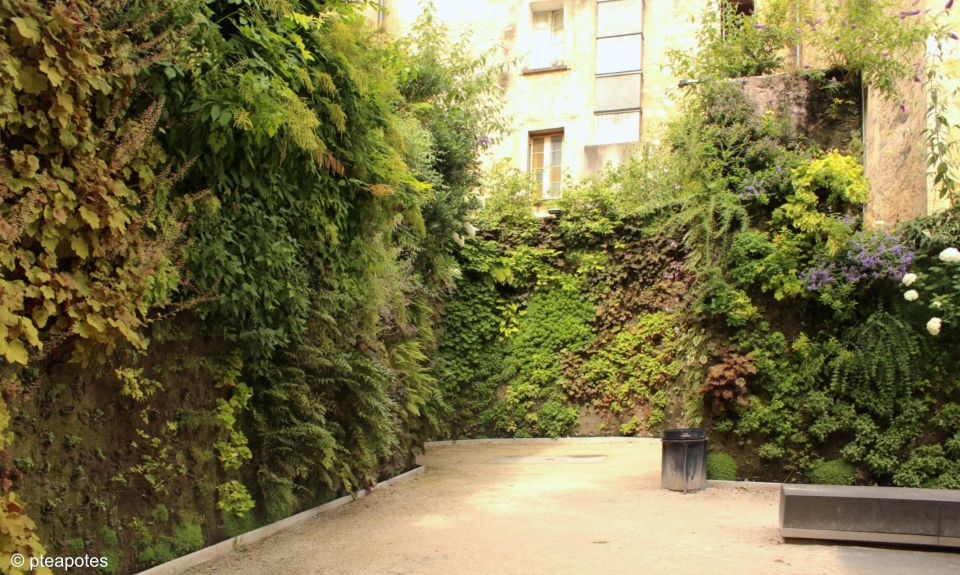
Contemporary landscaping projects in Bordeaux seamlessly complement the city’s historic 19th century parks, blending timeless elegance with modern sensibilities.
Designers have responded to current trends, focusing on co-construction, pedagogy, and flexibility.
The Botanical Garden by Catherine Mosbach and the Parc aux Angéliques by Michel Desvignes form a verdant green belt that evolves alongside the city’s development.
These dynamic landscapes invite visitors to engage and learn, offering a fresh perspective on Bordeaux’s cherished green spaces.
Whether strolling through the lush parklands or discovering hidden courtyards, visitors are treated to a harmonious fusion of old and new, where the city’s rich heritage intertwines with forward-thinking design.
Landscape Projects Responding to Current Trends
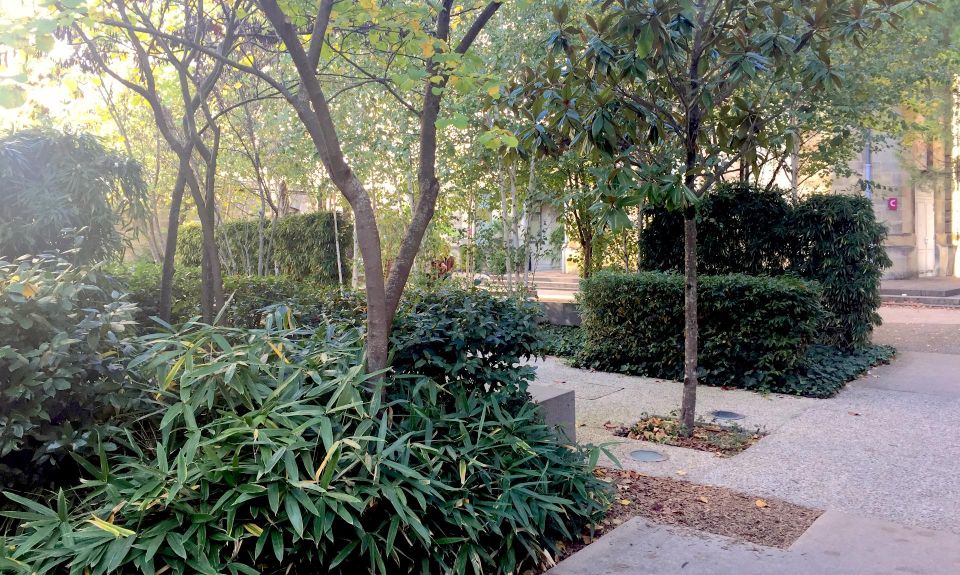
Moving beyond Bordeaux’s 19th century heritage, contemporary landscape projects in the city embrace cutting-edge design approaches that cater to modern needs and sensibilities.
Emphasizing co-construction, pedagogy, and flexibility, these forward-thinking interventions seamlessly integrate into the urban fabric, offering visitors dynamic and engaging experiences.
The Botanical Garden, designed by Catherine Mosbach, exemplifies this new ethos, blending educational and interactive elements within a lush, naturalistic setting.
Similarly, the Parc aux Angéliques by Michel Desvignes invites exploration and discovery, creating a green oasis that evolves alongside the city’s development.
These cutting-edge landscapes form a verdant network, redefining Bordeaux’s relationship with its natural environment and enriching the lives of its residents.
Development on the Right Bank
Along the right bank of Bordeaux, a former industrial fringe has been transformed into a vibrant, landscape-driven development, redefining the city’s relationship with the Garonne River.
This thriving neighborhood seamlessly blends modern architecture, verdant green spaces, and public amenities that invite residents and visitors alike to reconnect with the waterfront.
The development’s landscape-centric design features:
- Meandering pathways that wind through lush gardens and public plazas.
- Innovative stormwater management systems that create dynamic water features.
- Adaptive reuse of industrial structures, repurposed as dynamic community hubs.
- Inviting public spaces that encourage outdoor recreation and social interaction.
This landscape-led transformation has breathed new life into Bordeaux’s right bank, creating a vibrant and sustainable urban environment that celebrates the city’s natural assets.
Botanical Garden and Parc Aux Angéliques
Amidst the contemporary landscape of Bordeaux, the Botanical Garden by Catherine Mosbach and Parc aux Angéliques by Michel Desvignes form a captivating green belt that evolves in tandem with the city’s development. The Botanical Garden is a verdant oasis, where visitors can enjoy diverse flora and learn about the region’s rich botanical heritage. Parc aux Angéliques, meanwhile, is a dynamic public space that responds to current trends, offering opportunities for co-construction, pedagogy, and flexibility. Together, these two remarkable landscape projects contribute to Bordeaux’s vibrant and ever-changing urban fabric, blending the historical and the contemporary in a harmonious and engaging way.
| Project | Designer | Key Features |
|---|---|---|
| Botanical Garden | Catherine Mosbach | Diverse flora, educational opportunities |
| Parc aux Angéliques | Michel Desvignes | Co-construction, pedagogy, flexibility |
Redevelopment of the Quays
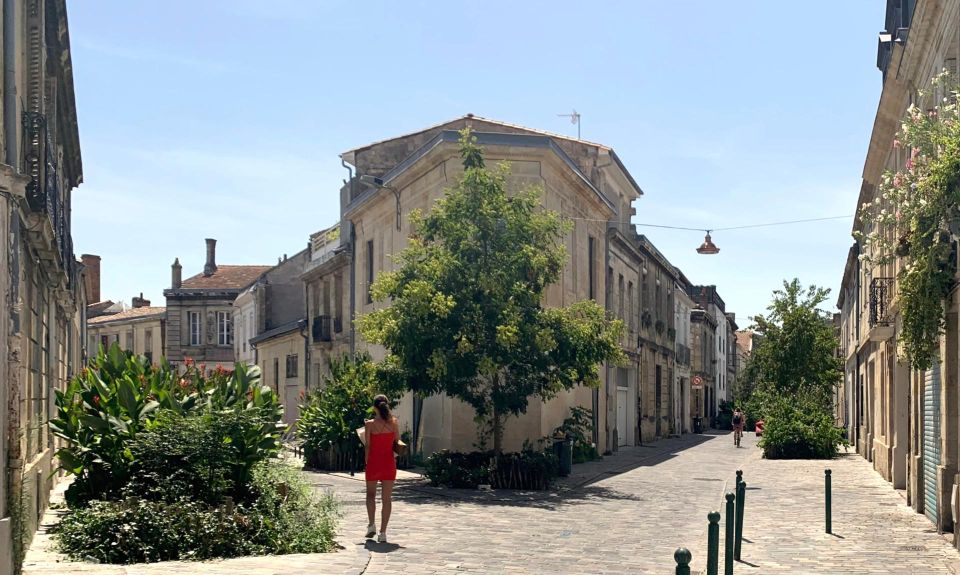
The redevelopment of the quays by renowned landscape architect Michel Corajoud formed the backbone of Bordeaux’s initial urban revitalization project, providing the city with differentiated quality public spaces that have profoundly influenced the relationship between the historic Stone City and the Garonne river.
Expansive promenades and pedestrian-friendly zones that invite strolling and leisure along the riverfront.
Carefully curated green spaces and public plazas that draw residents and visitors to experience the river’s edge in new ways.
Thoughtful transitions between land and water, blurring the boundaries and fostering a deeper, more immersive connection to the Garonne.
A revitalized setting that has catalyzed further development and investment along Bordeaux’s once-neglected riverbanks.
Differentiated Quality Public Spaces
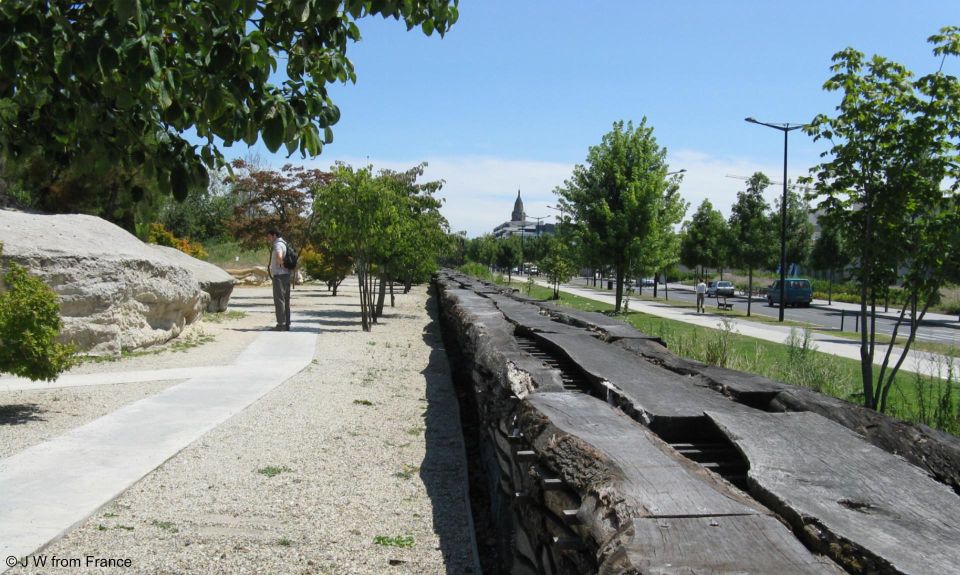
The carefully curated public spaces along Bordeaux’s rejuvenated riverfront captivate visitors with their differentiated design, seamlessly blending lush greenery, inviting promenades, and dynamic plazas that foster an immersive connection to the Garonne. Tranquil gardens dotted with benches invite contemplation, while bustling squares come alive with lively markets and concerts. Sculptural fountains and winding pathways guide pedestrians through a sensory experience, where the sights, sounds, and scents of nature intertwine. This masterful landscape architecture has transformed the city’s relationship with its waterfront, creating a vibrant, inclusive public realm that celebrates Bordeaux’s heritage while embracing a forward-thinking, sustainable vision.
| Serenity | Dynamism | Connectivity |
|---|---|---|
| Tranquil gardens | Lively markets | Winding pathways |
| Contemplative benches | Outdoor concerts | Sculptural fountains |
| Lush greenery | Bustling squares | Promenades |
| Sights of nature | Sounds of life | Scents of the Garonne |
| Invitation to pause | Energy and activity | Immersive experience |
Smaller-scale Nature-focused Projects
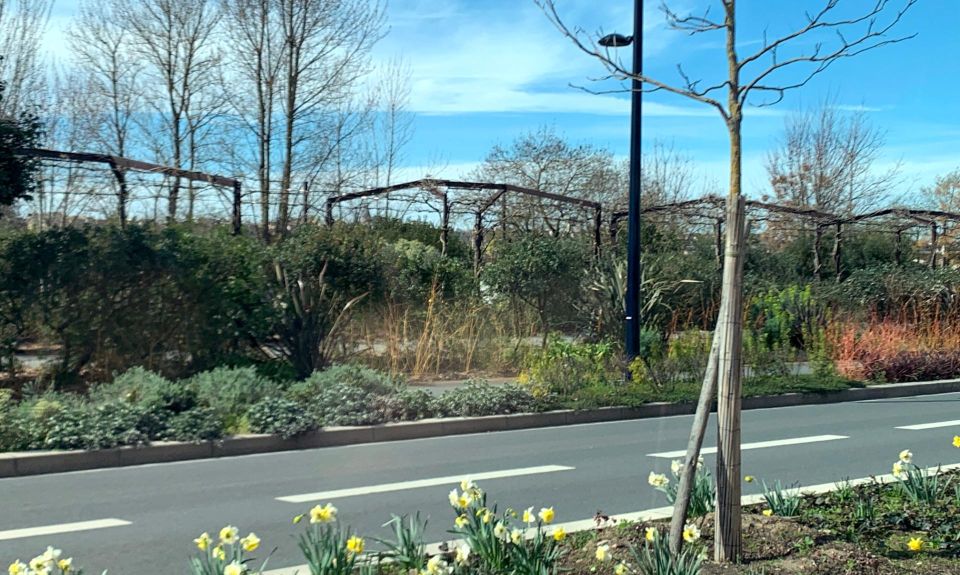
Nestled within Bordeaux’s historic heart, smaller-scale landscape projects offer a more direct relationship with nature, providing pockets of respite and discovery for residents and visitors alike.
From the lush vegetation of the Square Vinet, designed by Patrick Blanc, to the inviting Leyteire courtyard by Debarre Duplantiers, these projects showcase:
- A commitment to integrating nature into the urban fabric.
- Innovative approaches to creating intimate, human-scaled spaces.
These projects also focus on sensory experiences, like the play of light and shadow, and celebrate local biodiversity and ecological principles.
These nature-focused interventions exemplify Bordeaux’s dedication to balancing its architectural heritage with a vibrant, sustainable future.
Recap
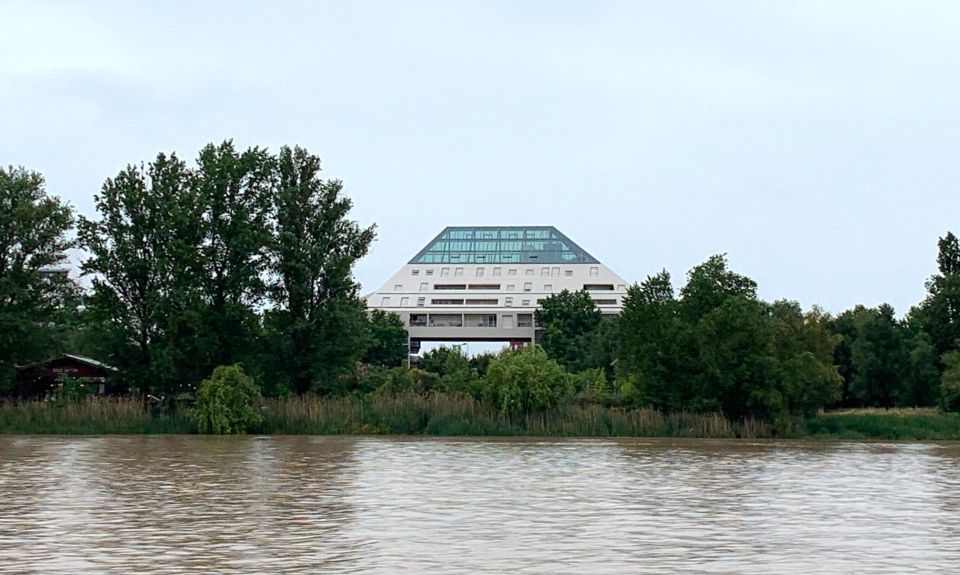
Bordeaux’s contemporary landscape design harmoniously blends timeless architecture and cutting-edge green spaces.
Innovative stormwater management and adaptive reuse of industrial structures transform the city’s relationship with its natural environment.
This captivating balance cements Bordeaux’s reputation as a model of sustainable urban design, where the old and new coexist in a vibrant, evolving tapestry that responds to current trends.

